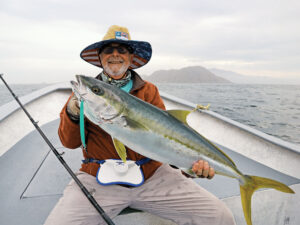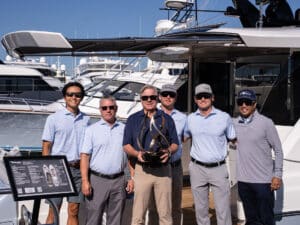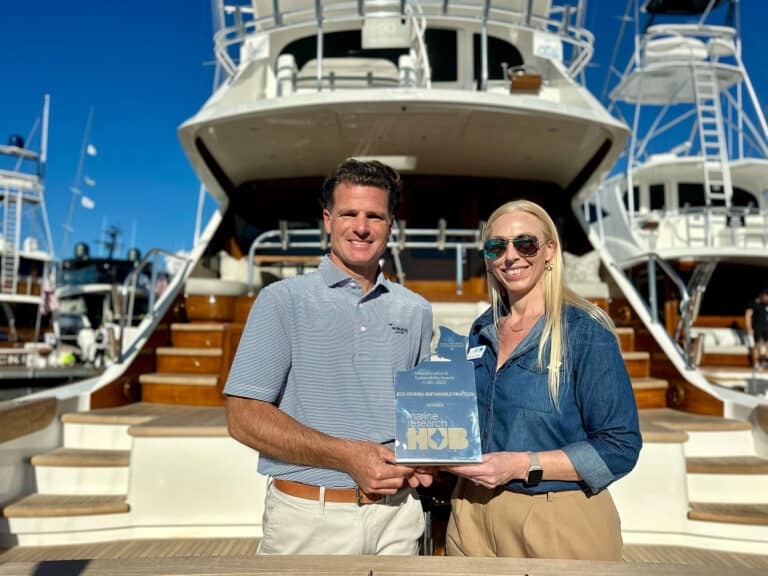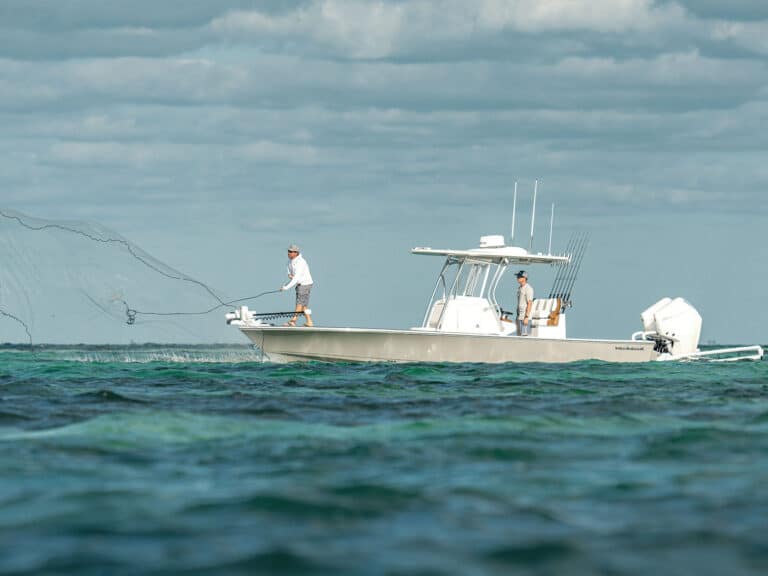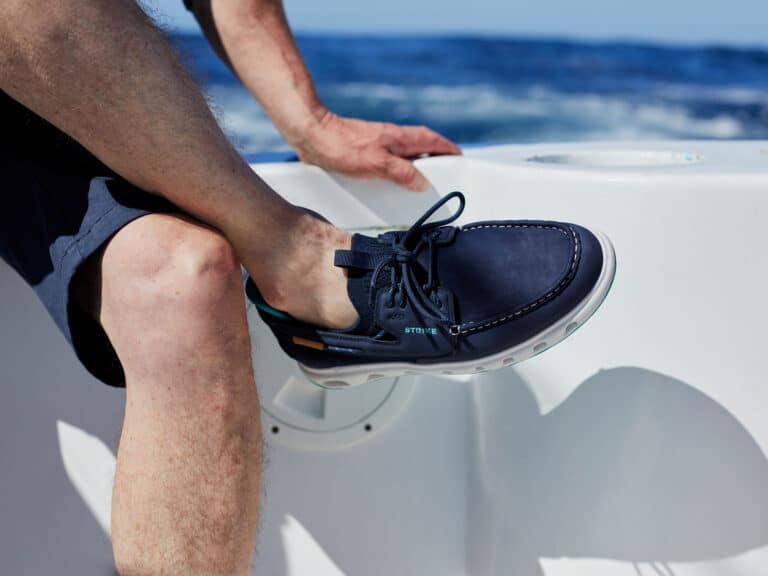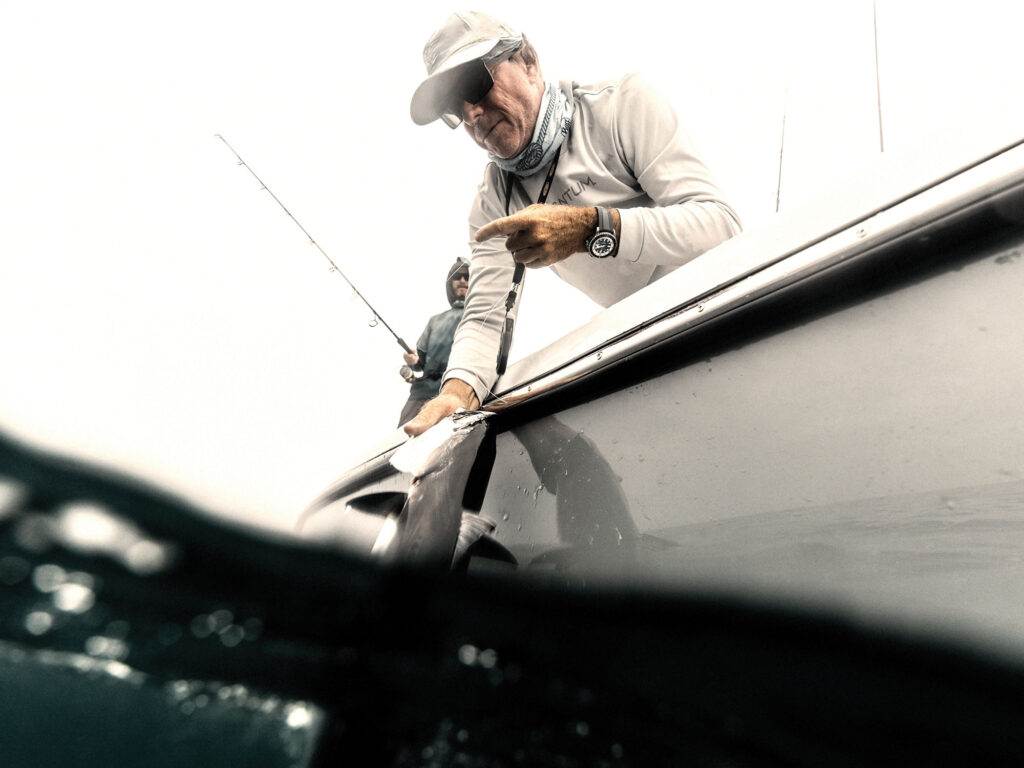
Summertime in Stuart, Florida, is a time of slick seas and abundance. Baitfish swarm where the St. Lucie River meets the Indian River and flows out of the pass over nearshore reefs of the Treasure Coast. Threadfins, pilchards, sardines, goggle-eyes, croakers—everything a game fish loves to eat is available, sometimes in swirling masses, both inshore and off.
And where there is forage, there will be game fish. Most anglers come to Stuart seeking big snook and sailfish—two very good reasons to start planning right now for next summer’s vacation, but more options abound. Trailer your boat or hire a guide; the action can be fast, and it’s surprisingly close to shore.
“You know, Stuart’s a very unique, opportunistic place for fishermen because you have a wide variety of species you can target in the summer,” says Capt. Jonathan Earhart of Chaos Fishing Adventures. “You typically have calm weather, and you don’t have to take long runs. I can be catching snook in the morning, and then if I get bored, I can shoot out and catch sailfish. Sometimes I can do that in a half day.”
This past June, Quantum Fishing hosted a writers’ camp at River Palm Cottages in Jensen Beach, just north of Stuart. We spent a couple days testing Quantum’s new spinning gear, and it became apparent that Quantum folks love to fish.

One-Track Mind
At 6 a.m. Quantum Marketing Manager Gary Zeidman, crackled with excitement as we walked the dock at River Palms to meet pro-staffer Matt George. “This guy’s kinda crazy. He only cares about sailfish,” Zeidman warned me, “and he specializes in catching them out of a small boat.”
George is a satellite communications executive who lives to fish. He founded the One More Bite Sailfish Challenge and relishes the sweet spot from April through June, when he says sailfish pod-up for courtship off Stuart. Although you won’t find dozens of fish like you might during a February blow here in Sailfish Alley, you also won’t have to contend with winter’s cold fronts. George said he’s released more than 200 sailfish in a summer from his 24-foot boat.
The captain waited aboard his Islamorada Boatworks bay boat. It’s a sleek, beautiful boat with a single Yamaha 300 on the back, but it didn’t look like anything you’d want to take too far offshore. It didn’t have a T-top, which is evidence of George’s fanaticism. “I didn’t want to have to fish around a top,” he explained. At least it was overcast the day we fished.
With a load of goggle-eyes and a few threadfins and pilchards in George’s 120 gallons of live-well space, he cranked some country tunes and put the hammer down in a balls-to-the-wall dash offshore. I wouldn’t say the ride was comfortable, but his boat is fast, stable and dry with a 20-degree deadrise. In no time, we deployed a spread in 100-foot depths about 8 miles out.
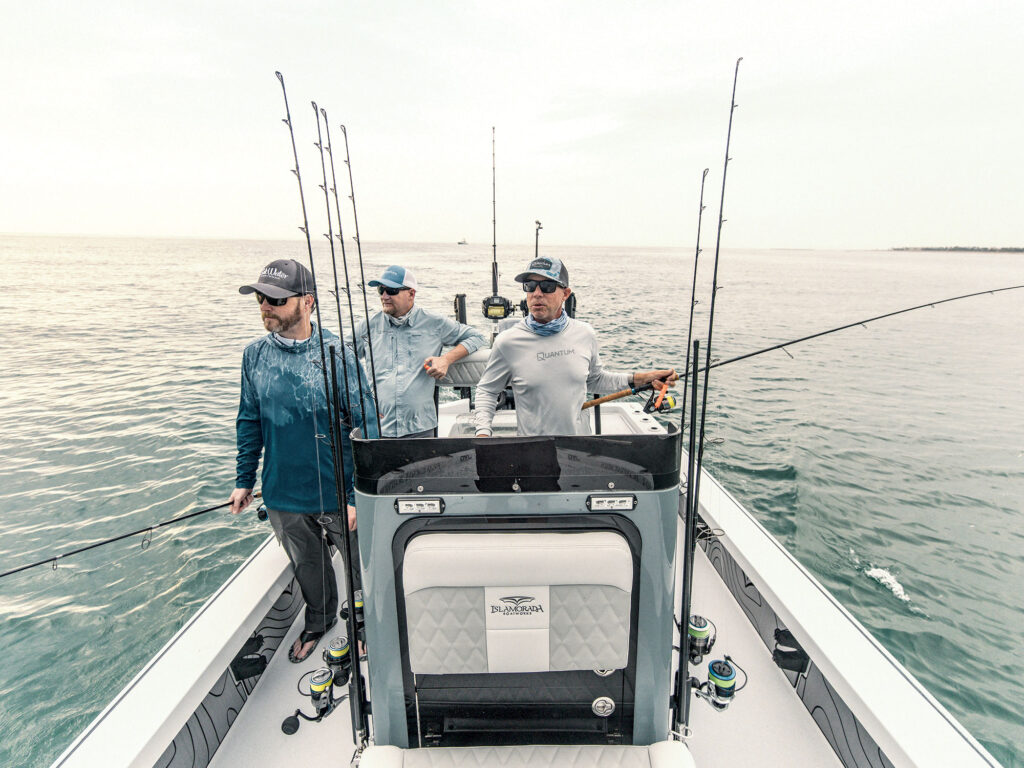
A Small-Boat Spread
Working without outriggers, a key to George’s spread is simplicity. He says stealth is crucial and that his boat is quiet with a low profile in the water. He likes to bump troll but says bumping into gear scares fish.
“On days when it’s windy and we have current and I can have a nice drift where I only have to bump once in a while, those are days I’ll just bump through all day,” he said. “The days I feel like I’m bumping a lot, I’ll go ahead and either put the kite up or put the trolling motor down.”
Either bump trolling with the big engine or clicking his Power Pole Move ZR trolling motor into anchor mode, the current pulls George’s dredge and baits up near the surface where sailfish feed. The first line deployed is a long line with a bridled goggle-eye set 75 yards back under a balloon inflated to the size of a softball. Then the dredge goes out on an electric kite reel just off the stern. A small boat doesn’t dictate a small dredge. George pulls a six-arm Fish Razr with a 42-inch bar.
With dredge strips sparkling in blue water, a second bait goes straight out the back, maybe half the length of the long line. Then George deploys a short line off one side, depending on current, about even with the dredge.
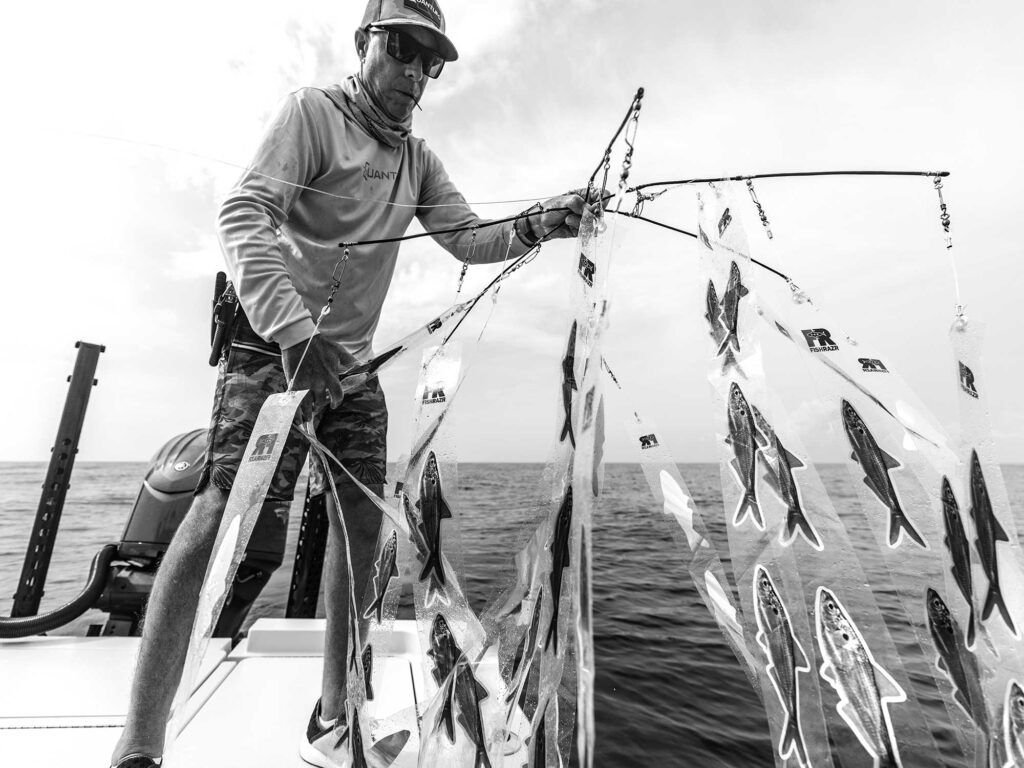
On the Drift
A flurry of activity produced a greyhounding sailfish and a couple of big bonito early. Then the morning enthusiasm ebbed into boat talk and sandwiches. Between runs to new spots, Zeidman told us why he’s excited about Quantum’s new Cabo spinning reels.
We fished our baits on Cabo 6000 reels paired with Zeal rods. That morning, everyone felt the smooth, even drag and operation as well as the cranking power of Quantum’s flagship reel on hard-pulling fish.
Zeidman explained one feature we couldn’t feel—the Cabo is sealed to IPX8 standards, which requires rigorous independent testing. Both the gearbox and drag system are fully sealed, even when submerged. “We have the only reel at this price point that is actually fully sealed,” Zeidman said.
After the bite got tough, George’s demeanor shifted and we understood why he named his tournament One More Bite. Late in the afternoon, hard-core rap bumped through the speakers. We were already late for afternoon activities, but George wasn’t leaving until we caught another fish. A little mahi Zeidman yanked in didn’t count.
“Why don’t we put out a prospect?” Zeidman asked. With a nod from the captain, he hooked a threadfin and dumped it back, way back, before beginning a slow retrieve. It didn’t take long. A big sailfish ate the bait and cut a course through the entire spread. The resulting spider web required deft knife work under pressure. “Look at us! We’re professional fishermen!” Zeidman hollered in jest. But he got his fish boatside for the release, and we called it a day.
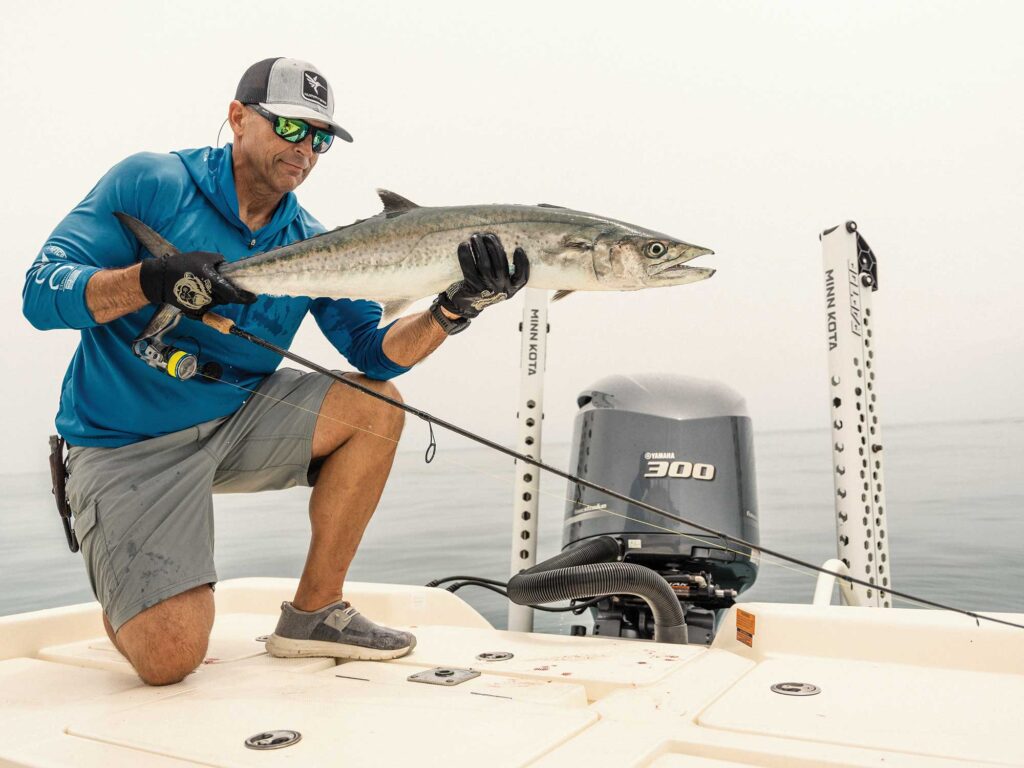
Nearshore Meat Run
On the second day of fishing, I was paired with Quantum Assistant Sales Director Katie Turner aboard Capt. Earhart’s custom 20-foot Pro-Line. If George is a specialist, Earhart (of Chaos Fishing Charters) is a generalist, a veteran captain with a nose for any fish—or every fish depending on how you look at it.
The day before, Earhart had taken his group on a meat run off the beach. Those guys returned to the dock chattering about fast action and how to transport their haul.
“We have several reefs out there, the 6- and 8-mile reefs,” Earhart said. “You get snappers, cobia, bonito, sailfish, kingfish, sometimes groupers. It’s a good mixed bag. If you want numbers and the weather’s calm—which it usually is in summer—it’s a great option, and the snappers are all very good eating.”
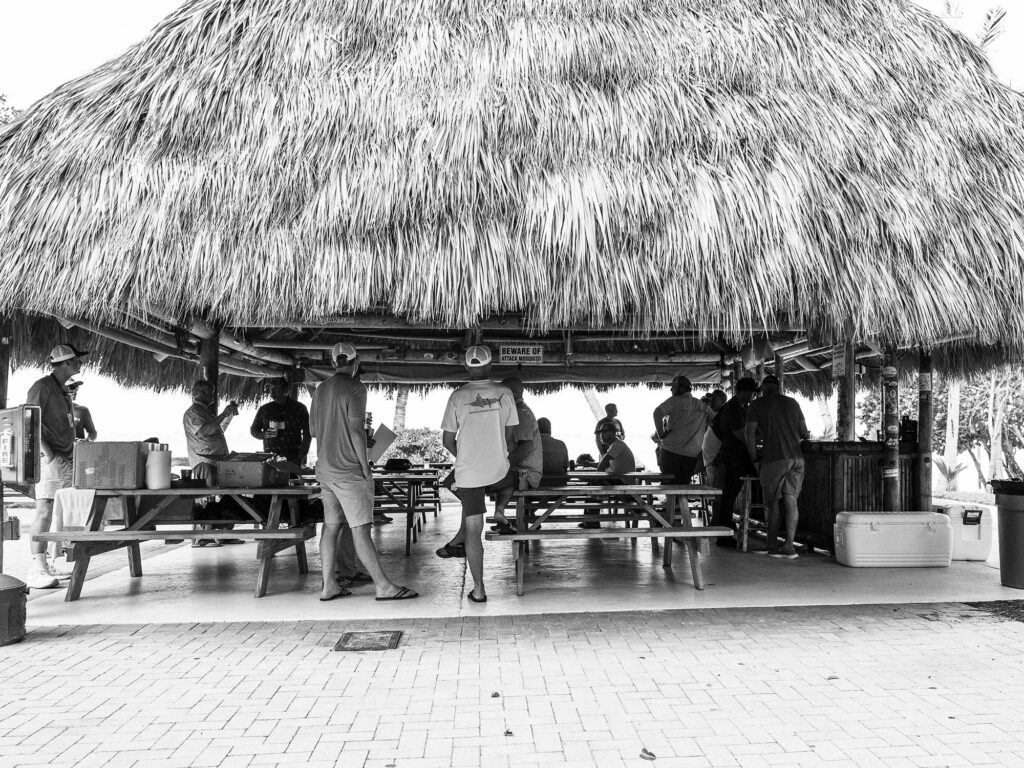
Rigged up with a standard fish-finder rig and 2- to 6-ounces of weight, depending on the current, they anchored and dropped small pilchards on short 4-foot fluorocarbon leaders to load the boat with mangrove, lane and yellowtail snappers. Earhart switches to a 20-foot leader with the same rig when targeting muttons. He freelines baits for shots at kings, sails, mahi and cobia.
Bottom fishing sounded fun, but Turner is a redfish girl from the South Carolina Lowcountry. She was eager to check a first snook off her list. Earhart happily obliged.
Read Next: Catching Springtime Snook Along Florida’s Treasure Coast
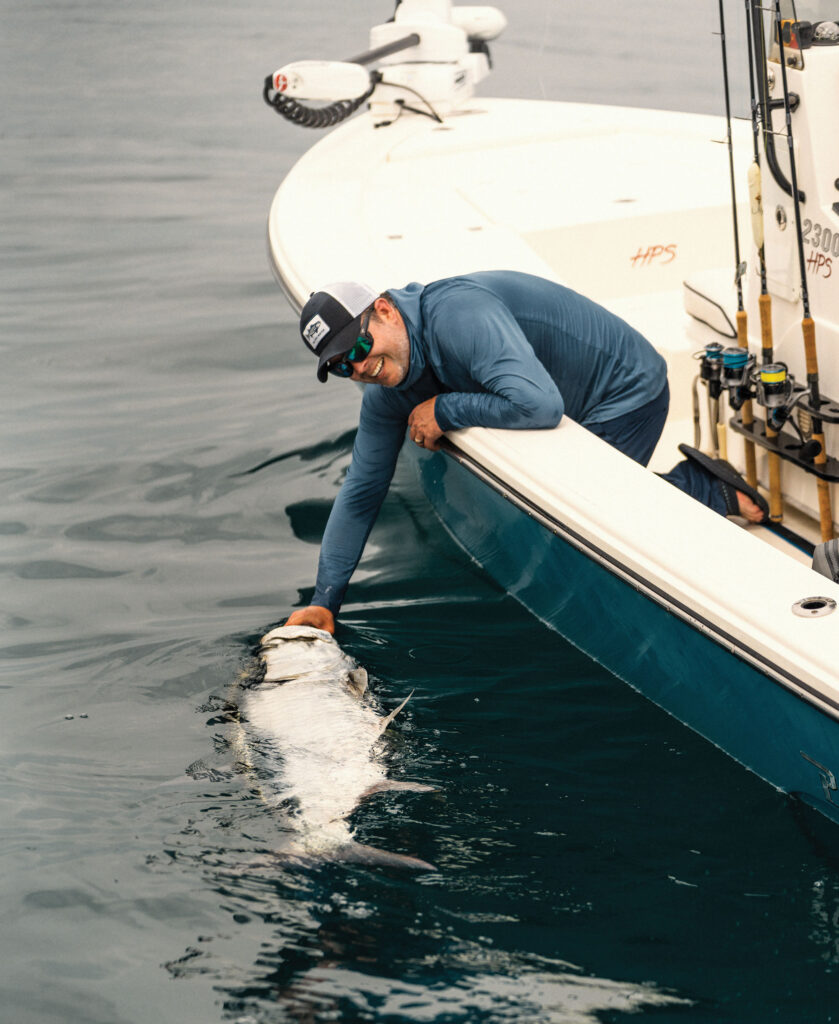
Milk Run for Snook
In two decades fishing the area, Earhart has developed a circuit of inshore spots that are amazingly specific. As we pitched large pilchards on 3000- to 5000-sized Cabos and Quantum’s new Merit combos, his directions were precise.
“There’s about a 4-foot section of that seawall under that branch there,” he said. “Throw it right up on the wall in that shadow.” Or, “Pitch it way up under that dock. Get as close to the bait pen as you can.”
Passing miles of river with tasty-looking docks and seawalls, he’d come off plane and put us on one small piece of structure with instructions to toss into a tight window. Then we’d let the baits work for a minute or two. If the pilchard wasn’t engulfed, we moved on.
Earhart definitely has his mojo spots but said finding fish is easy. “From March through October, you can find any piece of structure along the Indian River or St. Lucie River, and as long as you’re fishing live bait, chances are you’re going to catch a snook or a jack crevalle,” he explained. “Little points and curves or pilings that are on the edge, where there’s lots of current moving by, they’re great ambush points.”
The action was consistent casting baits to structure for snook and jacks. The Cabo’s slow-oscillating spool, which is designed to stack braid neatly and maximize casting distance, impressed me.
At one of Earhart’s spots in the back of a marina, a man sipping coffee at a café set his phone on the table and watched as we let our baits swim under a floating dock. For abrasion resistance in snaggy confines, Earhart uses a 30- or 40-pound-test fluorocarbon leader with a mainline of 15-pound braid.
“Let that pilchard swim all the way up under there and around the pilings,” Earhart said. “These snook are educated. They’re in there looking at that bait until they decide they want to eat it. Sometimes it’s a 50-50 on whether you get them out.”
The man at the café saw the snook swirl on Turner’s bait and cheered her on as she set the hook. With a deep bend in her Merit, she coaxed a nice snook out from beneath the dock and around an inflatable dinghy into the channel. The sizable snook, just under 30 inches, set a respectable bar for Tuner as she pursues her next personal best.
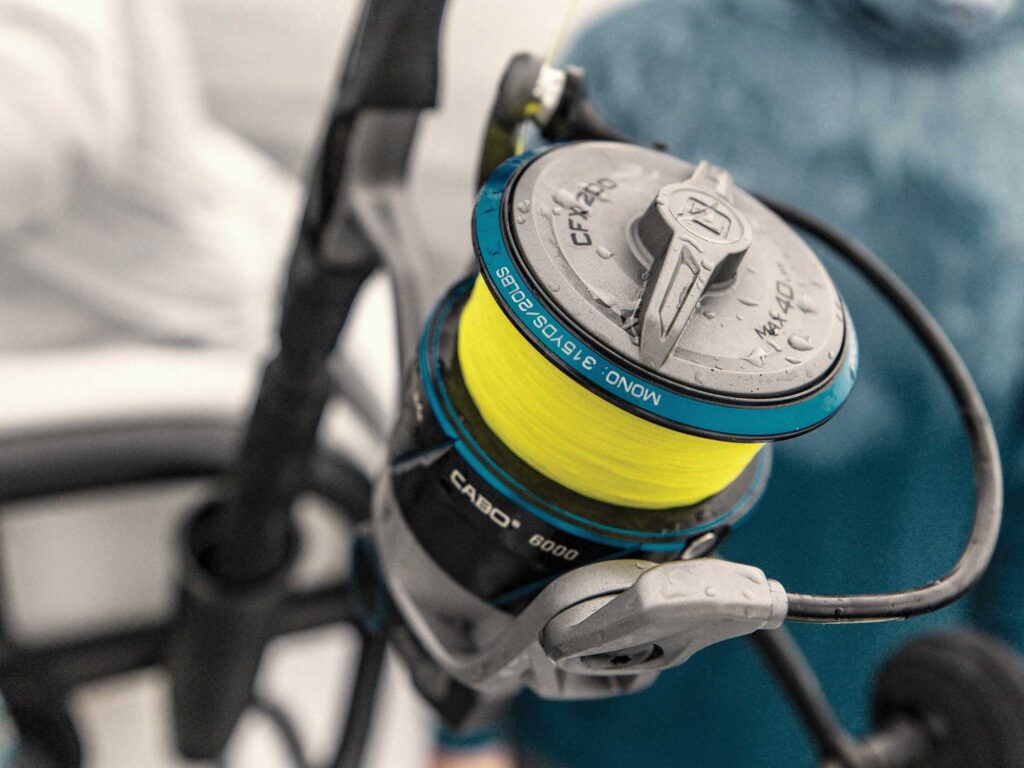
Quantum Cabo Versus Merit Combo
Both the Cabo reel and the Merit combo won awards at ICAST 2025. Both performed well on the water, casting and fighting big fish.
Here are some features:
- IPX8 Sealed (gearbox and drag system)
- Machined gears for cranking power and smoother/longer gear life
- Best-in-class max drag with a consistent curve
- Slow oscillation (2500-5000 models) for better line lay and casting distance
- IPX6 Sealed
- Same drag system as the Cabo
- Powerful, sensitive graphite composite rod blank
- One-piece stainless-steel guides
While the Cabo paired with a Zeal rod is Quantum’s flagship set-up, the Merit combo is an affordable option without much drop in quality. Because it’s fully sealed, the Cabo should retain its high-level performance over the long haul, but it’s worth noting that Earhart raves about the Merits. Charter captains like affordable gear that can take a beating.
On a personal note, I fought a 30-pound jack crevalle on a 5000-sized Merit. Under a heavy load, I had enough power to crank in line quickly, while the drag performed flawlessly on a fish that ripped off more than 150 yards on a blistering initial run.
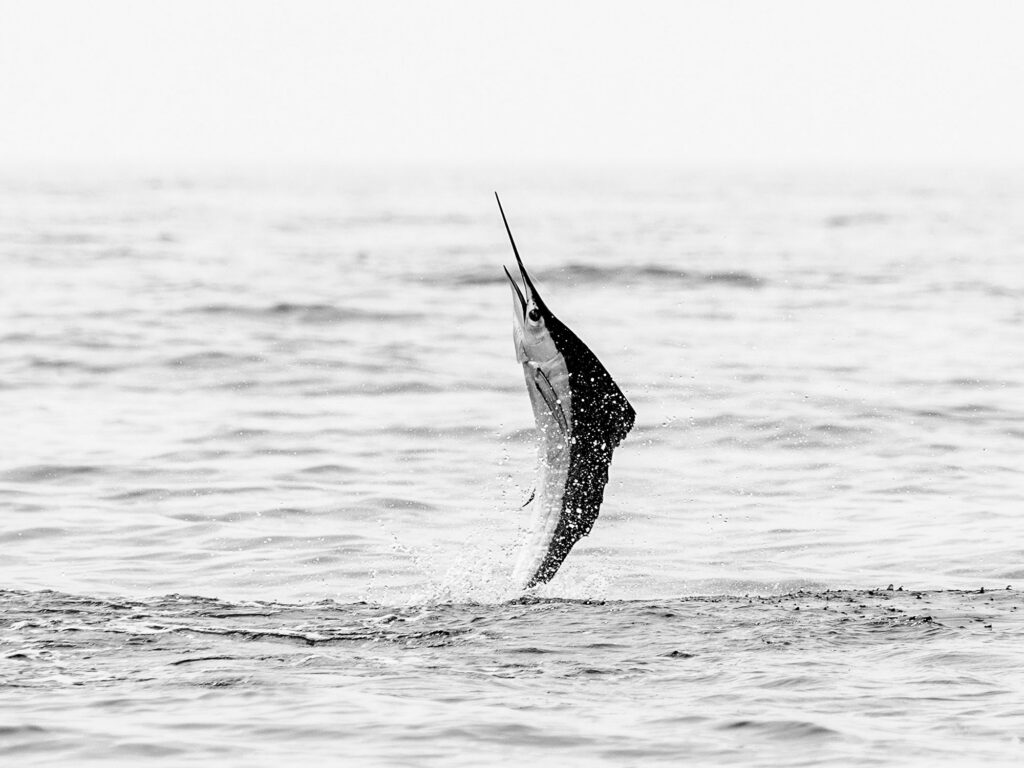
Sailfish Rigging Tips
Matt George fishes 30-pound-test braid with a top-shot of 40-pound-test fluorocarbon. He likes a 6/0 VMC Sure Set Circle Hook.
Twist a piece of copper wire around the rod just above the top grip, leaving a J-shaped tag to loosely hook the line. This provides tension to keep line from running out while drifting. When a fish bites, the wire straightens to free the line. The angler shuts the bail to engage the fish.
Threadfin herring are prevalent off Stuart. George partnered with Fish Razr to produce threadfin herring strips for his dredge. He says they’re more productive than ballyhoo or generic baitfish strips.
A 28-ounce empty Gatorade jug rigged in front of the dredge keeps it fluttering near the surface.
Use a squirt-nozzle water bottle to put a little water in your balloon before tying it around the line. The water in the balloon keeps it from blowing about and yanking the bait around.


